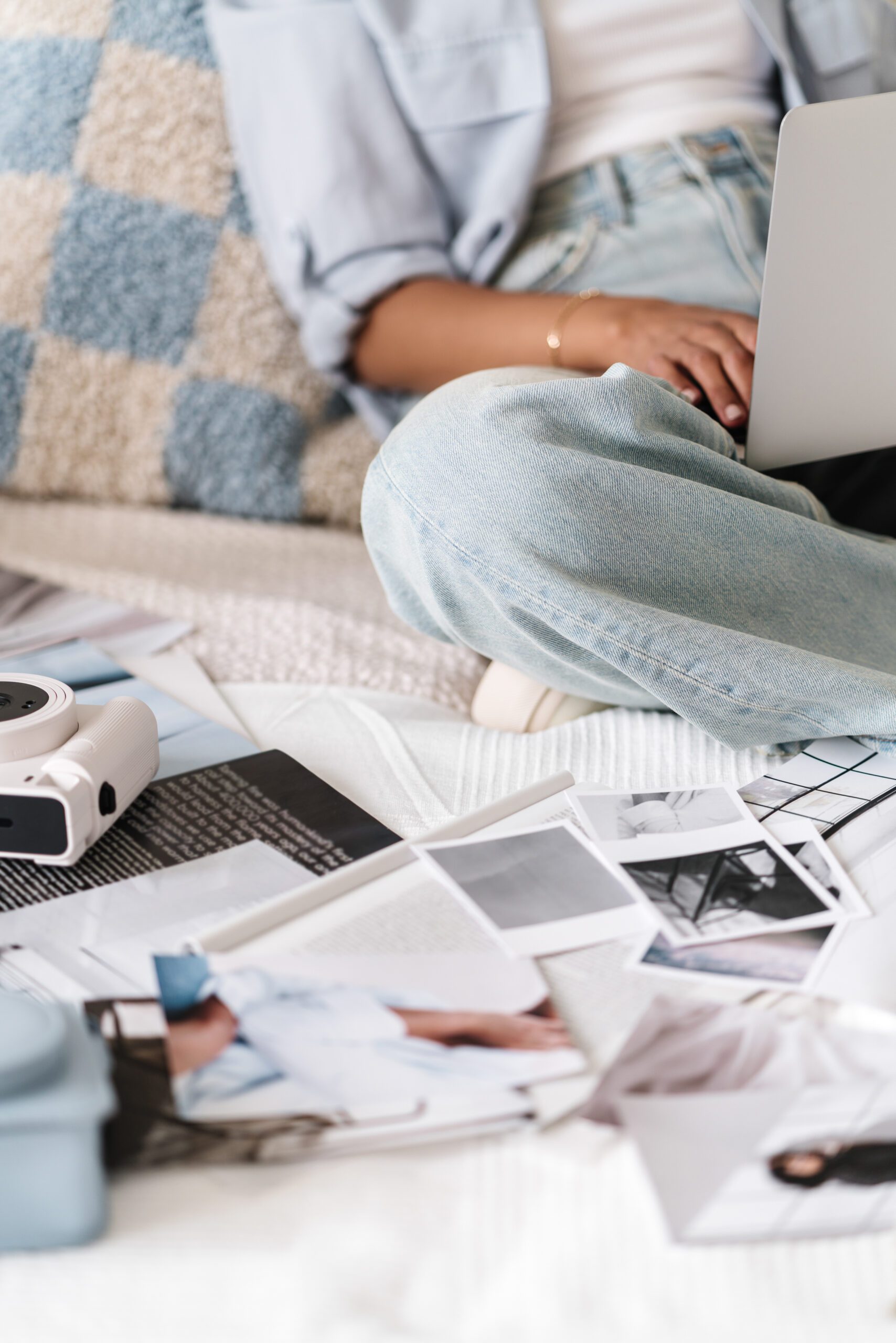- What Is the Myers-Briggs Personality Test?
- Understanding Your Type to Improve Your Workflow
- Designing a Brand That Aligns With Your Personality
- Leveraging Myers-Briggs in Your Business
- How Myers-Briggs Influences Your Design Style
- How to Use Myers-Briggs to Develop a Personal Brand
- Five Ways to Use Myers-Briggs to Build Your Dream Business
- Wrapping It All Up
Have you ever wondered how your personality impacts the way you run your business or design your brand? The Myers-Briggs Type Indicator (MBTI) is a valuable tool that can help you understand yourself better, align your work with your natural strengths, and create a business that feels authentic. Whether you’re a designer, entrepreneur, or small business owner, understanding your Myers-Briggs personality type can significantly improve how you approach your work, collaborate with others, and grow your business.
What Is the Myers-Briggs Personality Test?
The Myers-Briggs Type Indicator (MBTI) categorizes people into 16 personality types based on preferences in four areas:
- Extraversion (E) vs. Introversion (I): How you gain energy—through social interaction or alone time.
- Sensing (S) vs. Intuition (N): How you process information—through details or big-picture ideas.
- Thinking (T) vs. Feeling (F): How you make decisions—through logic or emotions.
- Judging (J) vs. Perceiving (P): How you approach life—structured or flexible.
Your type, such as INFJ or ESTP, gives you insight into your strengths, preferences, and work style.
Understanding Your Type to Improve Your Workflow
Each Myers-Briggs type has unique tendencies when it comes to productivity and organization. By understanding your type, you can tailor your workflow to suit your natural strengths:
- Introverts (I): Set aside time for focused, solo work to recharge and dive deep into your projects.
- Extraverts (E): Build collaboration and brainstorming sessions into your schedule to fuel your creativity.
- Judgers (J): Use structured tools like calendars and task lists to stay organized and on track.
- Perceivers (P): Allow flexibility in your day, giving room for inspiration to strike when you least expect it.
Designing a Brand That Aligns With Your Personality
Your Myers-Briggs type can guide you in designing a brand that feels authentic and resonates with your audience.
For Creative Visionaries (e.g., ENFP, INFJ):
Focus on storytelling and connecting emotionally with your audience. Your ideas shine when they’re tied to a bigger purpose or movement.
For Logical Strategists (e.g., ENTJ, ISTJ):
Lean into a clean, professional brand with clear goals and messaging. Showcase your expertise and how you deliver results.
For Detail-Oriented Types (e.g., ISFJ, ESTP):
Create a brand that highlights precision and attention to detail, with polished visuals and clear steps for clients to follow.
For Big-Picture Thinkers (e.g., INTJ, ENTP):
Your strength lies in creating innovative concepts. Make sure your brand reflects your bold ideas and problem-solving skills.
Leveraging Myers-Briggs in Your Business
The MBTI isn’t just for personal growth—it’s a game-changer for running your business. Here’s how you can apply it:
1. Build a Team That Complements Your Strengths
Understanding your type can help you identify areas where you need support. For example, if you’re a big-picture thinker (N), hire team members who excel at details (S) to balance your approach.
2. Improve Client Relationships
By identifying your client’s personality traits, you can tailor your communication style. For instance, Judgers (J) appreciate structure and clear deadlines, while Perceivers (P) thrive with flexibility.
3. Set Goals Aligned With Your Preferences
Use your MBTI insights to set realistic goals that match your natural tendencies. For example, Introverts (I) might prefer long-term planning, while Extraverts (E) may thrive with short bursts of action and networking.
How Myers-Briggs Influences Your Design Style
Your MBTI type can also influence your design preferences and style.
Extraverts (E):
You may prefer bold, vibrant designs that grab attention and create energy.
Introverts (I):
You’re likely drawn to minimalistic, calming designs that reflect your reflective nature.
Thinkers (T):
You might prioritize functional, logical designs with clear structure and purpose.
Feelers (F):
You often gravitate toward emotionally resonant designs that tell a story or evoke connection.
Recognizing these preferences can help you refine your creative projects, whether it’s designing a logo, website, or marketing materials.
How to Use Myers-Briggs to Develop a Personal Brand
A personal brand that reflects your MBTI type feels authentic and natural, which helps build trust and connection with your audience. Here are some tips based on personality traits:
- Introverts: Focus on content like blog posts, videos, or courses that showcase your knowledge in a thoughtful way.
- Extraverts: Lean into public-speaking opportunities, webinars, or live events to connect with your audience.
- Sensing Types (S): Highlight real-life results and practical advice in your brand messaging.
- Intuitive Types (N): Share your vision and big ideas to inspire your audience.
Five Ways to Use Myers-Briggs to Build Your Dream Business
- Shape Your Services Around Your Strengths: For example, if you’re a natural listener (e.g., ISFJ), focus on one-on-one coaching or consulting services.
- Market Authentically: Use your personality to guide your tone and style, whether that’s professional and polished or warm and conversational.
- Build a Workflow You Love: Streamline your tasks and set boundaries that match your natural tendencies.
- Understand Your Ideal Clients: Think about what types of clients or customers your personality naturally attracts and tailor your offerings to meet their needs.
- Avoid Burnout: Design a workday that aligns with your energy levels and preferences, allowing for rest and recharging when needed.
Wrapping It All Up
The Myers-Briggs personality test isn’t just a tool for self-awareness—it’s a roadmap for designing a business and brand that feels true to you. By understanding your type, you can work smarter, connect more deeply with your audience, and create a workflow and brand that feel authentic and energizing.
Ready to start? Take the Myers-Briggs test if you haven’t already, reflect on your results, and start making changes to align your business and brand with your personality type.
Pin for Later:


Jordin Brinn is the founder and lead designer of Unica Formo — a creative studio in Columbus, Ohio, specializing in custom Showit website design and brand strategy for service-based businesses like coaches, consultants, therapists, creatives, and wellness professionals. With over a decade of business experience, she helps clients bring strategy, clarity, and personality to their online presence.
Explore design services and free resources at unicaformo.com.
